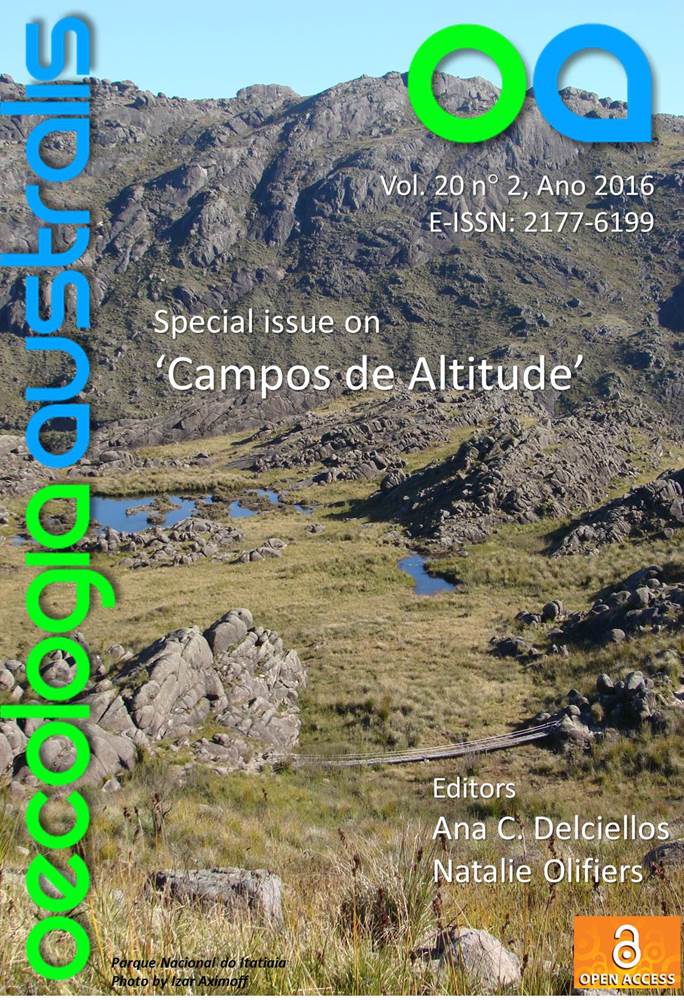VULNERABILITY OF BRAZILIAN HIGH-ALTITUDE GRASSLANDS TO CLIMATE CHANGE
DOI:
https://doi.org/10.4257/oeco.2016.2002.03Keywords:
Conservation, Endogenous Vulnerability, Global warming, Highland Vegetation, MountainsAbstract
Many studies have established that mountains environments have experienced a larger effect of climate change than lower altitude areas. Despite the few studies realized, the tropical mountains are more vulnerable, which directly affect its biodiversity. However, no study aiming to investigate the vulnerability of campos de altitude in a climate change scenario was realized until today. With this goal in mind, we conduct a review in order to respond three questions: 1) what are the climate change forecasts for southeast campos de altitude? 2) Based in another studies about climate change and mountains, how the campos de altitude vegetation will be affected in a climate change scenario? 3) Which factors make the campos de altitude vegetation vulnerable in that scenario? According to GCM HadGEM2-ES, a significant increase in annual average temperature and less expressive increase in annual precipitation are expected for campos de altitude sites in southeast Brazil. Changes in climatic seasonality will be also subtle. No papers about the effects of climate change in campos de altitude vegetation were found. However, many studies have pointed out a probable vulnerability of this kind of vegetation to climate change. Vulnerability of campos de altitude vegetation is related to its restricted and disjoint geographical distribution, their restricted altitudinal range, the vegetation susceptibility to fires and high level of endemism. However, ecological studies about this theme are still scarce. Hence, lack of knowledge hinder predictability about the future response of campos de altitude vegetation to climate change. We suggest a complementary approach between manipulative and natural experiments in order to evaluate the effects of anthropic activities for vegetation responses and functioÂnal ecology of species. Additionally, we must detangle the factors that affect the distribution and abundance of endemic species and the relative contribution of the risk factors for vegetation probably decline under future climate change scenario.


